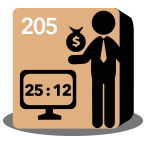
Alpha Defined
(2 of 6)
Alpha Defined
In a nutshell, alpha is the difference between a fund's expected returns based on its beta and its actual returns. Alpha is sometimes interpreted as the value that a portfolio manager adds, above and beyond a relevant index's risk/reward profile. If a fund returns more than what you'd expect given its beta, it has a positive alpha. If a fund returns less than its beta predicts, it has a negative alpha.
Things To Know
- If a fund returns more than what you'd expect given its beta, it has a positive alpha.
Thinking back on beta
As you'll recall from lessons on risk, beta tells you how much you can expect a fund's returns to move up or down given a gain or loss of its benchmark. For example, if the ABC Fund has a beta of 1.1 in comparison with the S&P 500 and the S&P 500 returns 30% for the year, you would expect ABC Fund to return 33%. (30% x 1.1 = 33%.) Since mutual funds don't necessarily produce the returns predicted by their betas, alpha can be helpful to investors.
How to calculate alpha
To calculate a fund's alpha, first subtract the return of the 90-day Treasury bill, for whatever time period you want to measure, from the fund's raw return. What does a government bond have to do with all this? The T-bill serves as a proxy for a risk-free investment and we're assuming that the return of a mutual fund should, at the very least, exceed that of a risk-free investment. This figure gives you the fund's excess return over the risk-free, guaranteed investment. From that, subtract the fund's expected excess return based on its beta. What's left over is the alpha.
Some things to remember about alpha
Because a fund's return and its risk both contribute to its alpha, two funds with the same returns could have different alphas. Further, if a fund has a high beta, it's quite possible for it to have a negative alpha. That's because the higher a fund's risk level (beta), the greater the returns it must generate in order to produce a high alpha. Just as a teacher would expect his or her students in an advanced class to work at a higher level than those in a less-advanced class, investors expect more return from their higher-risk investments.

